Here is the Volume 4 of Curling from When you watch something, visit us first! Ms. Mika MATSUZAWA, who represented Japan in Curling at the 19th Olympic Winter Games in Salt Lake City, USA, 2002, told us about the End plan of Curling this time. This is the combined version of Part 4-1 through 4-5 on our YouTube channel.
In Vol.3, we learned about “FESRAIN,” which is unique to Curling.
This time, Ms. Mika MATSUZAWA, who represented Japan in Curling at the 19th Olympic Winter Games held in Salt Lake City, USA, in 2002, told us about the End Plan of Curling.
I think you will understand how Curlers (Curling players) think about competing.
.png)
Part 4-1: End plan without the last stone
Now, about the End Plan for a team without the last stone. The basic idea of the team without last stone is to utilize the Center Guard stones to make it difficult for the opponent to make the last shot of the end.
As there is Free Guard Zone (FGZ) rule, which prohibits the opposing team from taking out stones that are not in the House, named FGZ rule, and currently, another No Tick-zone Trial Rule is being tried for a trial period. (*This rule has become a permanent one from July, 2023.) The No Tick-zone Trial Rule states that the Center Guard stones must never be moved if those are even slightly touching the center line.
So, since the opponent is not allowed to touch the Center Guard stones, for example, when there was no No Tick-zone Trial Rule, it was possible to move the Center Guard stone like this as long as it was not taken out, but now the No Tick-zone Trial Rule prohibits moving any Center Guard stones those are touching the center line. Inevitably, it became easier to have many Guard stones remain around the center.
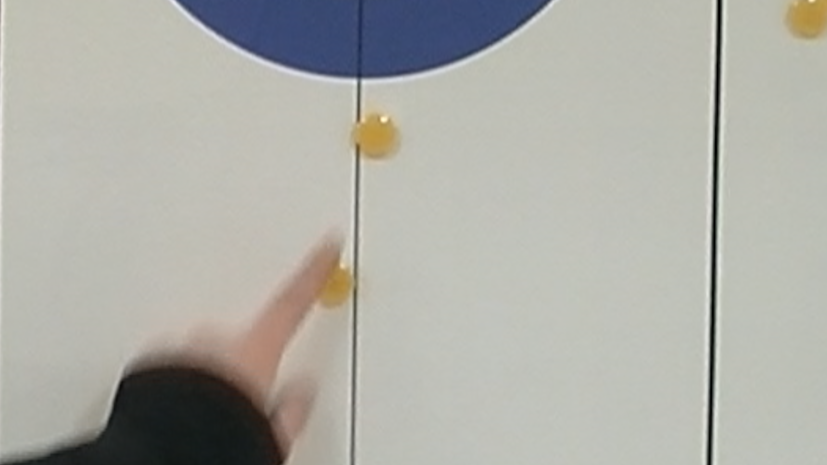
Since the game progresses more often with the Center Guard stones in place, it is now difficult for teams with last stone to score points, and conversely, it is easier to steal for the team without last stone.
Now, let’s look at how the team without the last stone should play. The basic Game Plan for a team without a last stone is to force the opponent to score only 1 point, so they want to create a situation where their stones are around the center of the House, as when they have many stones there, the space in which the opponent can score is very narrowed. This kind of situation is called “the House is narrow ed,” and since the opponent can only score in limited spaces, although the team with the last stone would like to score multiple points, it becomes difficult to do so.
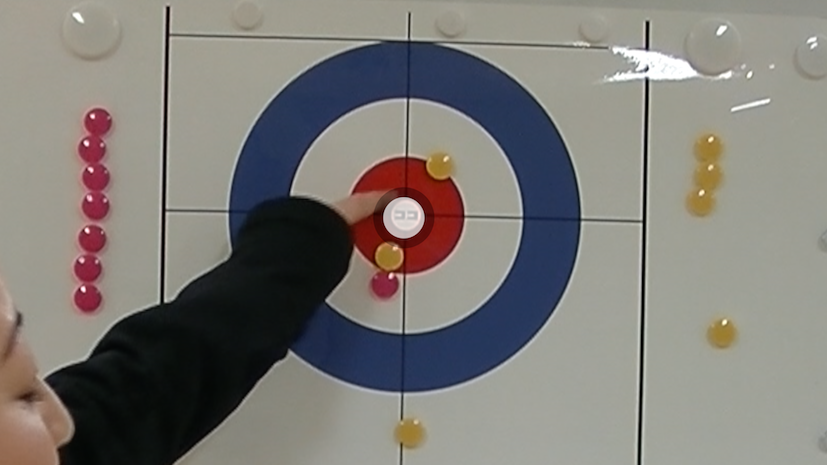
Therefore, for a team without the last stone, it is the ideal to have the House as narrow as possible and to create a situation that makes the opponent to score only 1 point. So, for example, if there are some Guard stones on the center line, but still the House is not narrowed, it is easy for the opponent to score in this space and score 2 or more points.
For a team with the last stone, a wide House increases the possibility of scoring multiple points. Therefore, it is important for the team without the last stone to have and keep their Number 1 stone as close to the middle of the House as possible, which is difficult for the opponents to take out.
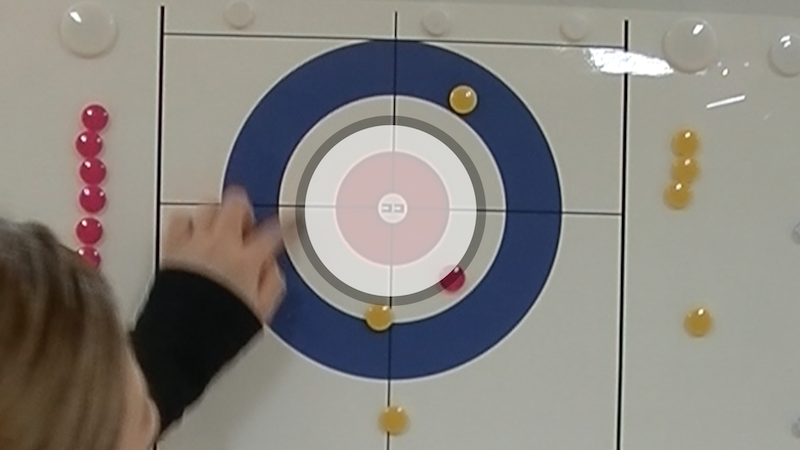
By creating a situation that there are some Center Guard stones and having the No.1 stone like this, even if Red team has the last stone, to have Red team have no choice but to score only 1 point, or, in fact, to make Red team may have difficulty scoring even 1 point, and in the result, to make the opponent score 1 point, in other words, to give the opponent only 1 point is the end plan of the team without the last stone.
Part 4-2: End plan with the last stone
As a team with a last stone, they want to use the House as wide as possible, so they would place Corner Guard stones. Without Corner Guard stones, it is very difficult to score multiple points, so they place the Corner Guard stones first. Of course, the opponent’s Center Guard stone may be placed like this, too.
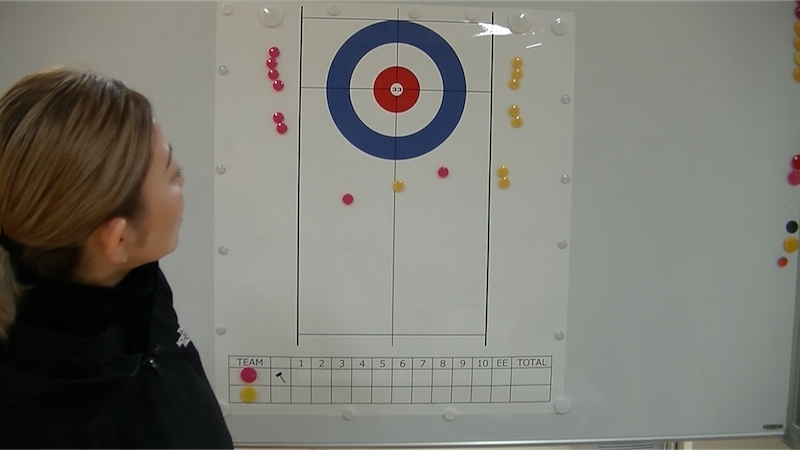
In this situation, for example, the opponent wants to make the House narrow, so it is often the case that the opponent’s stones are placed close to the center of the House.
However, when Red team which has the last stone wants to score multiple points, though the opponent has a great advantage now, but by placing other stones in the House which can be 2nd and 3rd point later, as Yellow would score 1 point in current situation, but as far as Red stones are in the House, if the Red last stone can take out this Yellow No.1 stone in the House, Red can score multiple points.
Even if this is the situation, Red can still hit this Guard stone with the thrown stone and send that Guard stone into the House for some possibility, so if they put stones on both side that have some possibility, they may have 2nd and 3rd points. To do so, it is important for the team with the last stone to use the House widely, of course, and to be a little patient even if the opponent is holding an advantage in the House. By being patient, depending on how the opponent plays, but the opponent does not like it. The opponent does not like to have these 2nd or 3rd stones in the House.
In this situation, for example, Yellow team has No. 1 and No. 3 stones, but Red also has 3 stones in the House. Then what Yellow does, for example, is against this stone.
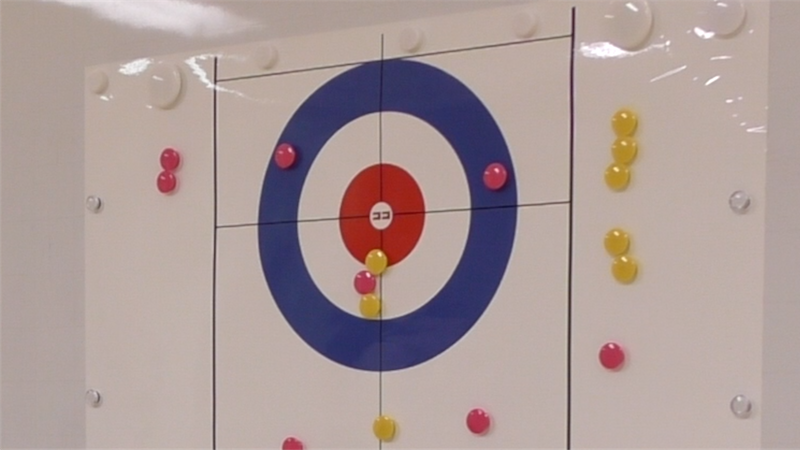
Like this, to make this Red stone in the House invalid, for example, Yellow throws a Freeze shot. Of course, if this Red stone can be seen, Yellow can take it out. As a team without the last stone, they want to avoid being scored by the opponent as many points as possible, so they will eliminate the possibility of 2nd and 3rd point. They want to create such situation, but if, for example, they make a mistake here, the opponent will hit this stone and take only this stone away.
If the situation is not too good, remove the Guard stone in front, for example. Even if the opponent’s stone is No.1, team has the last stone should be always aware of the possibility of scoring multiple points in the last of the end. Even if it is impossible to hit stones in the House directly, for example, it is possible to hit the Guard stone first, and to send such stone into the House like this way. It would be nice for the team with the last stone if the stones were just scattered like this. The House becomes a little wider.
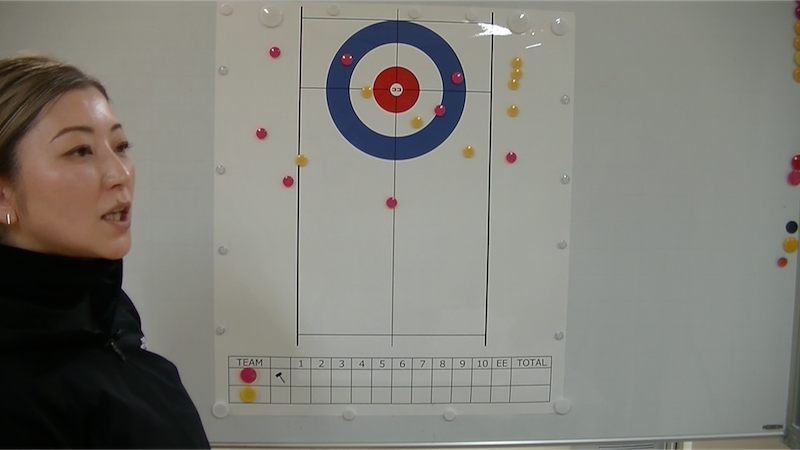
If the opponent’s stone is at the center of the House, such stone is quite powerful, and it will become more difficult to score, so the basic idea for the team with the last stone is, while keeping the House wide by the delivery of Second or Third, to have stones that will be multiple points later.
Part 4-3: Roles of Lead & Second
Role of Lead
Now, talking about the roles of each position, first of all, the important role of Lead is, for example, if there is very little difference of point or players would like to know the ice condition, they may put a Guard stone and then deliver their stones into the House, or, if there is a large difference, no Guard stone is needed and they send their 1st delivery into the House, so, to use or not to use the Free Guard Zone (FGZ) rule.
When a team is quite losing, they definitely need Guard stones. Therefore, for example, they may put 2 Guard stones like this, called “Double Center Guard stones,” but on the other hand, when they really need Guard stones but they make a mistake and the thrown stone goes into the House, this is already fatal for that end, and it becomes very difficult to Steal that end.
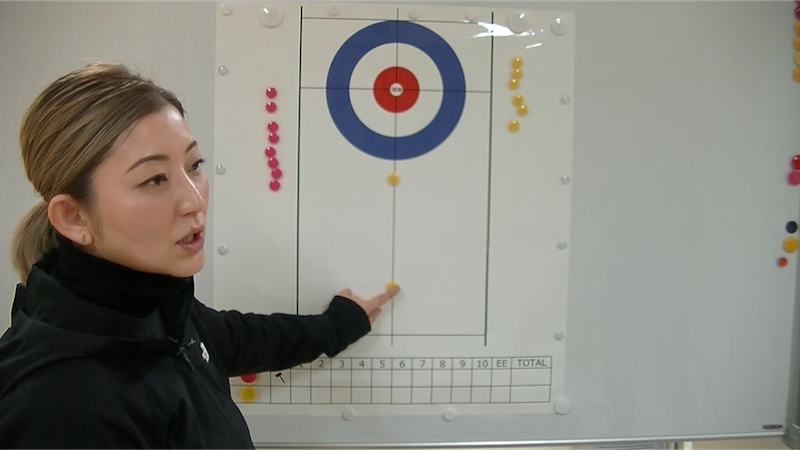
Therefore, the 2 deliveries of Lead are very important shots to control that end.
Role of Second
Consider what kind of Curling they want to do at that end, and the Second that takes over the shape created by the Lead will make it better. They have to think about how to pass the House to the Third and the Skip in a desirable situation. The role of the Second is to make an advantageous situation utilizing the Center Guard stones that their lead has placed.
For example, if they want to narrow the House, the Second need to deliver the stone firmly behind the Center Guard stone placed by Lead, or, for example, if they have a big lead, they need a Take Out shots to remove the opponent’s Corner Guard stone.
Or, if they are losing by a large lead, they may want to put a Guard stone. When the opponent puts a stone in the House like this, the Second removes the opponent Guard stone first. There is a pattern in which the role of the Second is to remove the Guard stone more often.
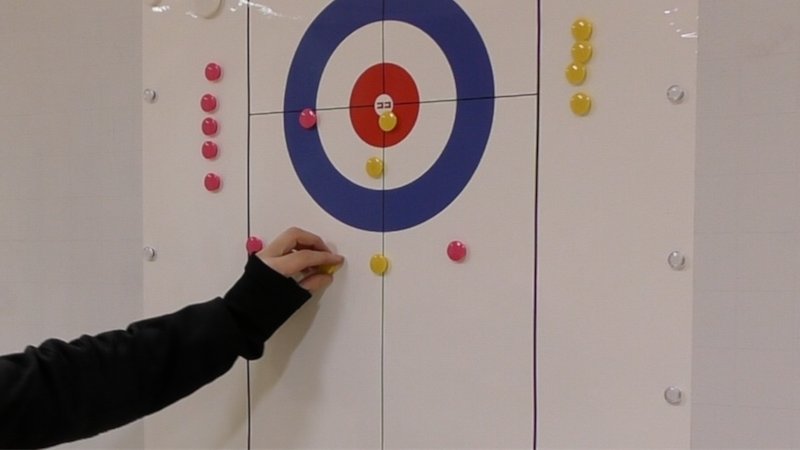
It would be good if they could make the situation to be able to do something against this stone later.
If the opponent’s stone is in the House, the Second must surely take the stone away from the House. Or, after taking it out, to make the thrown stone roll to the center, so the role of the Second is to reduce the opponent’s stone, or to create a shape that has their own stones in the center.
Change of the Role of Second with the No Tick Shot Rule
Actually, because of this No Tick Shot Rule, while the Second used to do more Take out shots and it was enough if Second could remove the Guard stone in front, but now it is necessary for them to be able to make a good Come around shot to create the desired situation, or a shot to deliver a thrown stone firmly into the House under such a situation where some Guard stones are placed.
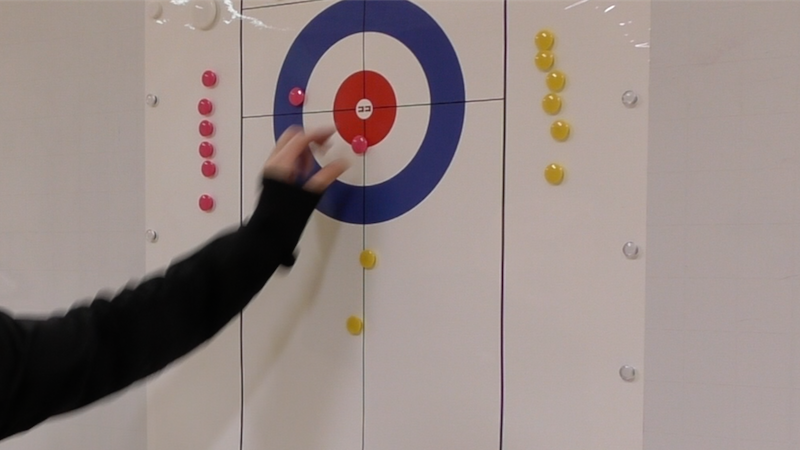
In the past, they used to be able to choose take out shot like this, but now the Second has to deliver their stone into the House because they cannot touch the stones on the center line. So stones tend to gather here. In such a situation, it is a necessary skill for the Second player to be able to take these 2 Guard stones out by the first delivery of the Second of the team with the last stone when the No Tick Shot Rule is no longer applied.
If the Second can do this, they can destroy the advantage of the No Tick Shot Rule at once, so it is very worth it for a team to have a Second who can do a solid double take out shot of Guard stone as well as being able to make Draw shots. I think the Second should also firmly express the team’s intention of what they want in that end. This is the role of the Second.
Part 4-4: Finishing the End
When the number of rocks remaining to deliver in each end is getting 3 or 2, players start thinking about how they are going to score points and how they have their opponent to make some mistakes, and how they conclude their End plan.
In this situation, what Red team must do before the finish of the end is to move this Yellow stone somehow, so they try to move the stone inside the House surely at last around the 2nd delivery of Third from the development that had been reducing the Guard stone in front. Of course, they can take this stone out like this way, and, while they can make a shot that moves stones in the House and change the arrangement of them, and they hand over to 2 deliveries of Skip.
In the early stages of each end like Second or the 1st delivery of Third, for example, it may be acceptable if a stone hit by the thrown stone cannot hit the stones in the House, but as the number of stones remaining gradually decreases, they start to think that they have to move this Yellow stone somehow. In this case, they would not prefer a shot that may result in a miss, but do a shot that has some certainty to change the arrangement in the House, even if they can move the Yellow stone only to the No.2, and if there are some Red stones in the House, the opponent may make some mistake this time. Like this way, players think about how they can score a point at last, or aim for multiple points, or create a situation where the opponent cannot score any point.
For example, if there is 1 Guard stone like this, and until now they have aimed for a Come around shot to before this Tee Line but failed to hide behind the Guard, and the opponent has taken this out, but the number of remaining stones is getting 2 or so, they may aim to go behind the Guard completely even though it goes behind the Tee Line.
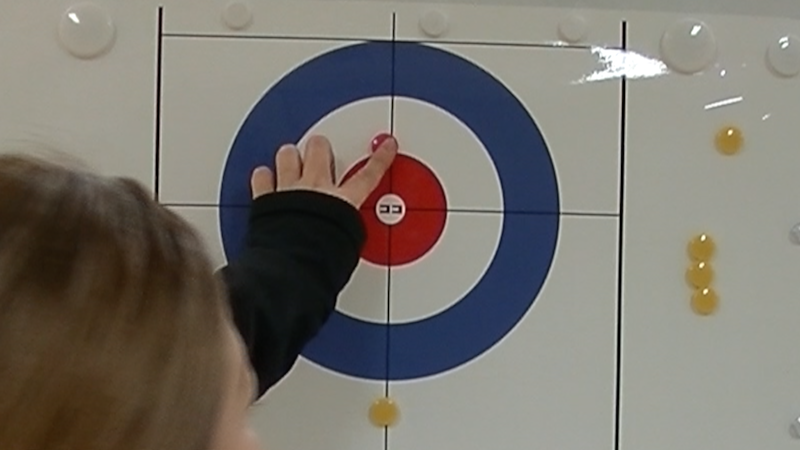
By having the stone completely hidden behind the Guard stone, the opponent’s shot becomes more difficult. Of course, this Freeze shot that the opponent puts their stone close to the Red stone is very difficult, so they can make this kind of shot that easily invites the opponent to make a mistake and make a multiple point attempt.
As Skip without the last stone, they want to make the House narrower because they want the opponent to score only 1 point at the end. In this situation, the opponent’s stone is No.1, and Yellow team has the No.2 stone, and it is possible to take this Yellow stone out like this way, but in order to make sure that the opponent scores only 1 point, the strategy for Red to put their stone close to this Yellow stone and to create one that cannot be easily taken out by the opponent like this is effective.
Then, the space in the House becomes very narrow, and to take this Yellow stone out becomes difficult, so it is inevitable that the opponent will score only 1 point, therefore, if their End plan is to make the opponent 1 point, Skip will choose a shot to create a stone which cannot easily removed as well as that makes the House narrow, and have the opponent scores only 1 point.
Part 4-5: When not following the theory
In Curling, the basic idea is that players have their Game plan, their End plan, and then they decide their shots based on “FESRAIN”, but it is possible, for example, that they can already read the ice condition early in the game. For example, if a team is playing their 2nd or 3rd game on a certain sheet in a tournament, players already have a stable reading of the ice, so of course they may attack from the 1st End without looking to see what is going on.
What players must be careful of, however, is their “ability,” as I mentioned earlier. It is of course important to know whether or not they have the ability, and based on that, they should decide whether or not they can firmly attack from the beginning of the game.
And, when there is a big difference of 5 or 6 points, the losing team will find it difficult to win the game even if they are playing following the theory, so then they have to steal every End, for example, while the opponent thinks they can win even if they have less stones on the ice every End, therefore, when there is a big difference in points, the losing team still wants to have many Guard stones, and, conversely the winning team may deliver stones into the House, or if they decide that they don’t need stones in the House, they may let the stones go through the House from the 1st delivery of Lead and make a situation with few stones on the ice.
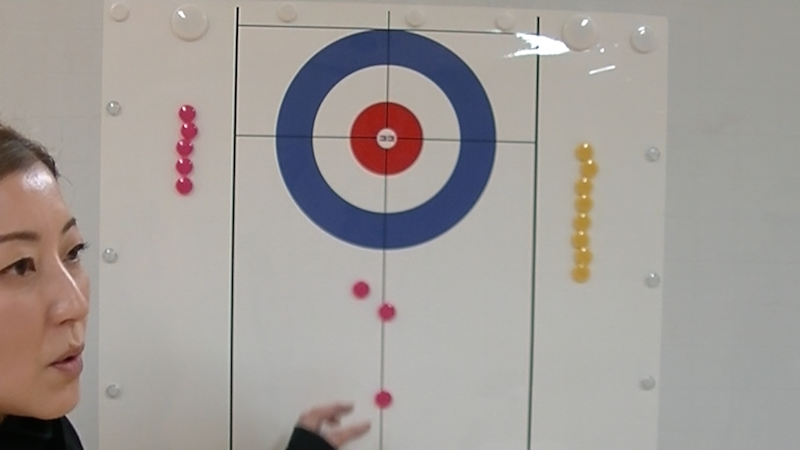
Therefore, when there is a big difference of points, the End plan or Game plan which I mentioned are not necessarily followed.
Furthermore, although I do not want this to happen too often, if a shot does not go for the designated distance because of dust under the stone, or if a teammate touches the stone, the stone should be removed in accordance with the spirit of Curling, and in such a case, both teams have 8 deliveries each originally, but 1 shot becomes invalid and it becomes 8 deliveries against 7, which is a very favorable situation for the opponents.
When a team is likely to put their stone to their opponent’s stone like this manner, but their shot has dust under it and it becomes invalid, their opponent comes to have a chance, and if the opponent can once again firmly create a good situation for theirselves, it will be a very favorable position to them.
And about the last of the End. For example, if the last delivery of the Skip of team without the last stone, which was an easy Takeout shot to hit out this stone, is invalid due to Touchstone, team with the last stone may be able to get 2 points easily, even though they would have thought that it would be enough if it is a blank End. Of course, Touchstones and dust under the stone should not happen often.
Every delivery is important, of course, but on shots that are more important to the team, the voice of the instructions to clean may be louder. It is very important to clean in front of the stone, because if even a little bit of dust gets under the stone, the stone can easily curve, so it is very important to clean in front of the stone as part of the Sweeper’s role.
Share this content:
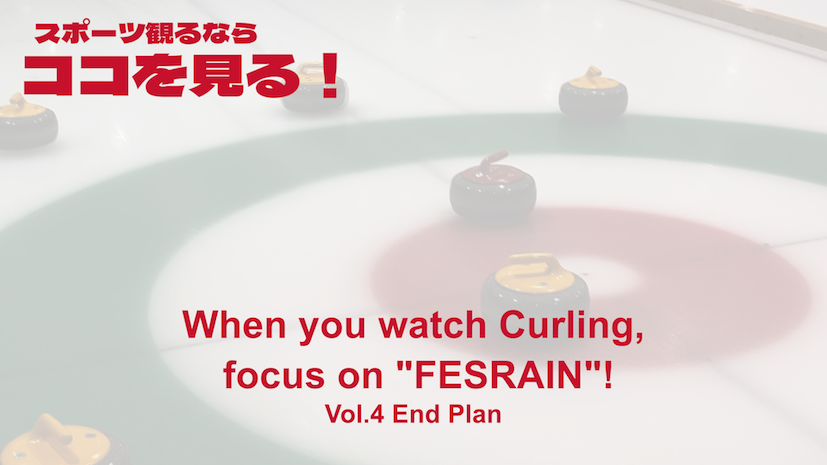
コメントを残す